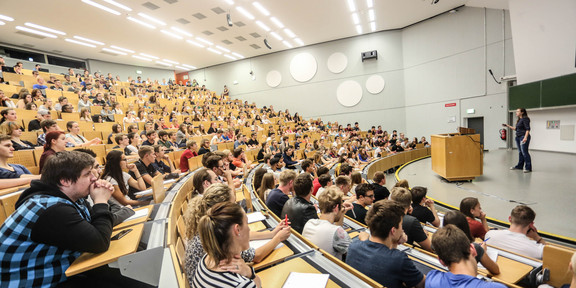Activity in Physics
- Kolloquium

Activity in Physics
Ordinary materials are "passive" in the sense that their constituents are typically made by inert particles which are subjected to thermal fluctuations, internal interactions and external fields but do not move on their own. Living systems, like schools of fish, swarms of birds, pedestrians and swimming microbes are called "active matter" since they are composed of self-propelled constituents. There is an "activity parameter" (sometimes called motility or self-propulsion velocity) which characterizes the distance to equilibrium, i.e. if the activity is zero we are back to equilibrium. Active matter exhibits a plethora of novel phenomena as revealed by a recent combined effort of statistical theory, computer simulation and real-space experiments.
After an introduction into the physics of active matter focussing on biological and artificial microswimmers as key examples of active soft matter [1], a number of single-particle and collective phenomena in active matter will be adressed demonstrating the role of activity.
These include motility-induced phase separation and novel nonequilibrium structures. The final open question is: can the activity in physics departments (like the Fakultät Physik der TU Dortmund) be correlated to the activity in physics?
[1] For a review, see: C. Bechinger, R. di Leonardo, H. Löwen, C. Reichhardt, G. Volpe, G. Volpe,
Active particles in complex and crowded environments,
Reviews of Modern Physics 88, 045006 (2016).









